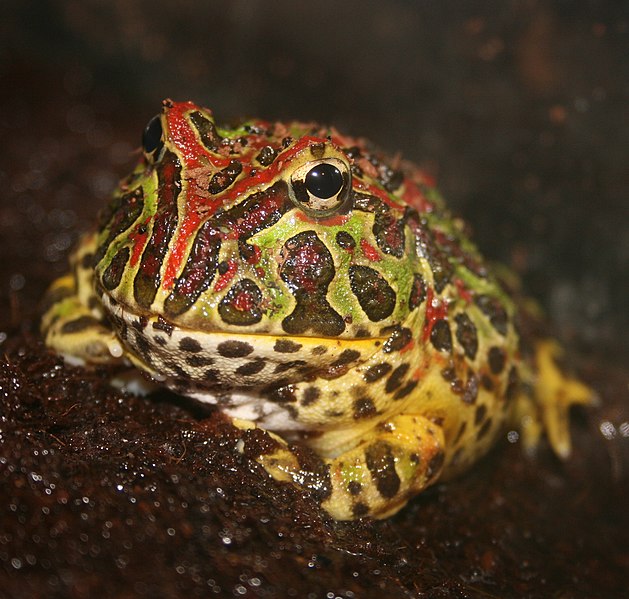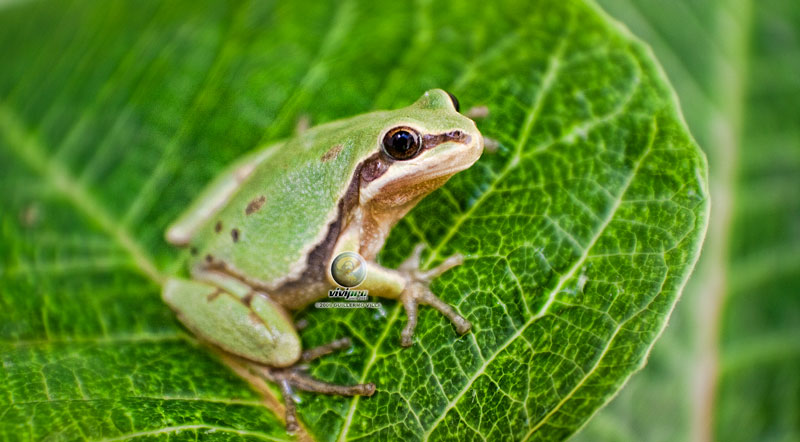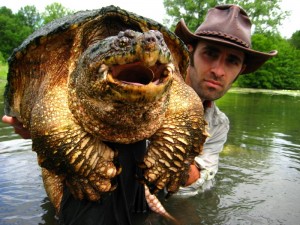 The Argentine or Ornate Horned Frog (Ceratophrys ornata) may be the world’s most popular amphibian pet. Dubbed the “Pac Man Frog” due to a resemblance to the large-mouthed video game character, it is beautifully colored and “charmingly” pugnacious in disposition. Despite their size (females may be compared to salad bowls; males are much smaller), Horned Frogs require relatively little space and are an ideal choice for those seeking an interesting pet that may live to age 20 or more. Albinos and other unique color morphs, as well as hybrids between related species, are available.
The Argentine or Ornate Horned Frog (Ceratophrys ornata) may be the world’s most popular amphibian pet. Dubbed the “Pac Man Frog” due to a resemblance to the large-mouthed video game character, it is beautifully colored and “charmingly” pugnacious in disposition. Despite their size (females may be compared to salad bowls; males are much smaller), Horned Frogs require relatively little space and are an ideal choice for those seeking an interesting pet that may live to age 20 or more. Albinos and other unique color morphs, as well as hybrids between related species, are available.
Natural History
Argentine Horned Frogs inhabit savannas (grasslands) in Argentina, Uruguay and Brazil. In some regions, they become dormant during cool, dry periods.
Seven related species have been described. Of these, the Cranwell’s or Chaco Horned Frog (Ceratophrys cranwelli) is most frequently seen in the pet trade. The following information can be applied to its care. The Surinam Horned Frog (C. cornuta) bears the longest “horns” of all (please see photo). Read More »
 That Reptile Blog – Reptile, Amphibian and Exotic Pet Care and Information
That Reptile Blog – Reptile, Amphibian and Exotic Pet Care and Information



